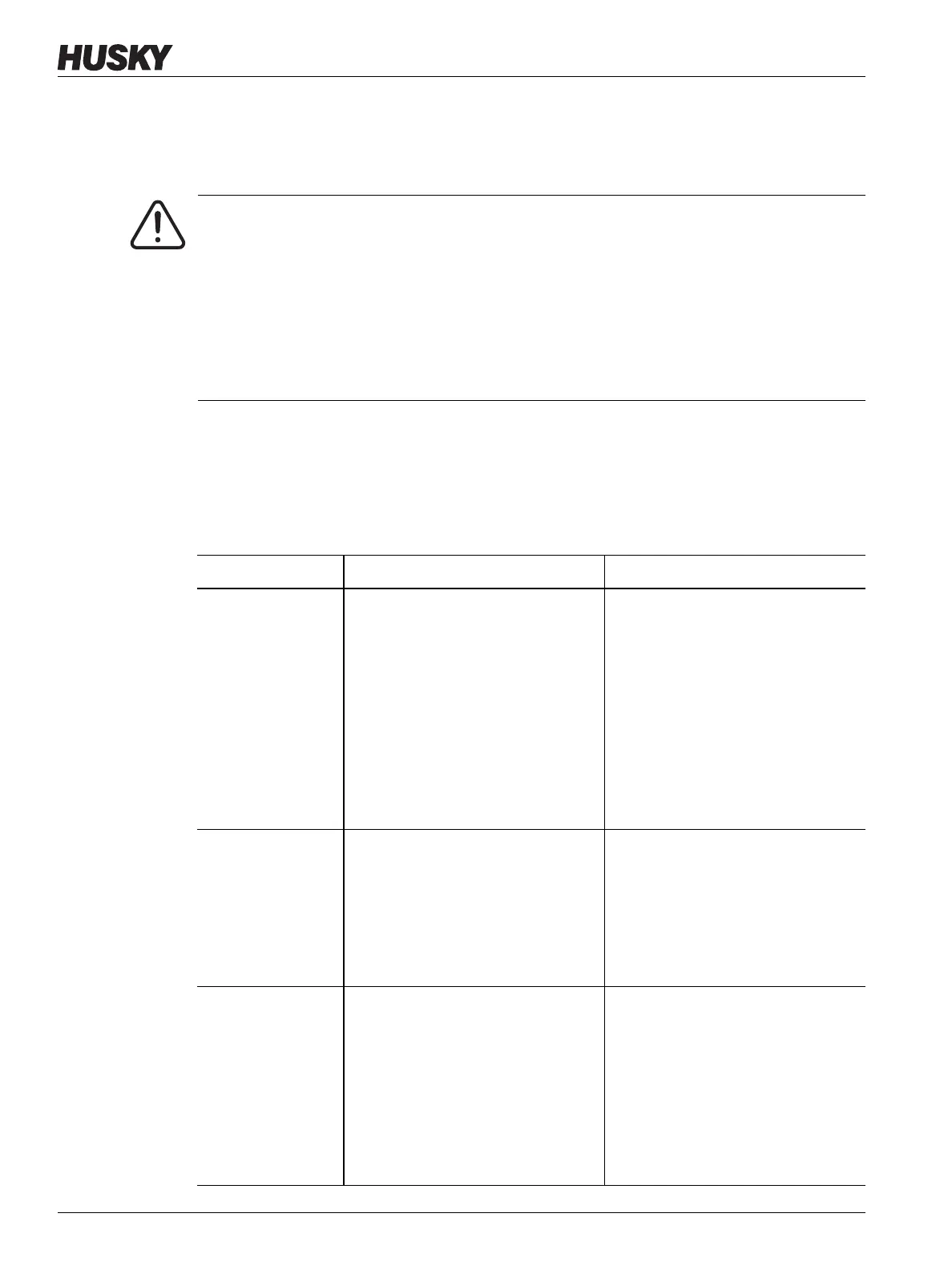v 1.0 — February 2020 Altanium Matrix5
230 Basic Troubleshooting
15.7 Basic Troubleshooting
Table 15-2 lists some basic problems that could occur, along with possible causes and
solutions that can help with troubleshooting the Altanium Matrix5. If the problems shown
continue after troubleshooting, or problems occur that are not shown in the table, please
contact the nearest Husky Regional Service and Sales office.
WARNING!
Electrical and mechanical hazard- risk of death, serious injury and/or damage to the
equipment. Turn off all power to the system and disconnect it completely from the
main input power.
Hazardous voltages– risk of death or serious injury. Before you do service on the
Altanium unit, lock-out and tag the Altanium Main Power switch in accordance with
local codes.
Use a ground strap when handling any of the Altanium components.
Table 15-2 Troubleshooting Procedures
Problem Possible Causes Solution
Read Time Out The card cannot communicate (bad,
not installed, or not powered).
The card is not at the address
expected.
The CAN bus (cables and backplanes)
cannot move data.
The operator interface cannot
communicate with the CAN bus.
If fault is on a zone, remove and re-
seat the card or replace the card.
If fault is on many zones, check the
supply to the controller to make sure
there is not a missing phase.
If the fault is on all zones, check the
power and communication cable to
the operator interface to make sure
they are connected correctly or
change the operator interface
computer.
Fuse Blown (Open) Short circuit in the mold or cabling.
Output incompatible with the
heater.
Excessive voltage applied to the
controller.
Read the mold electrical prints and
use an ohmmeter or insulation
resistance meter to inspect the
cables and mold. It is possible that
this is not a controller issue, but the
connectors on the back of the
controller must be inspected as well.
Over/Under
Temperature
This may be setup, sensor, output, or
control related.
Make sure that the Alarm window is
set to an appropriate range and not
too small.
Recommended: ±10 °F (6 °C).
Re-ART (Tune) the zone under typical
molding conditions. Make sure that
the mold is in the injection machine
with mold cooling on and resin in the
mold.

